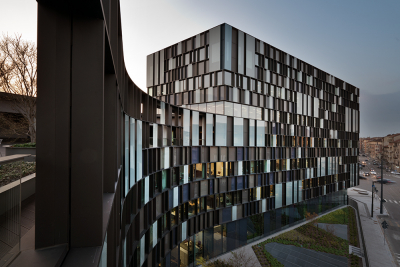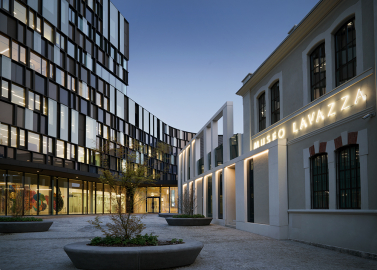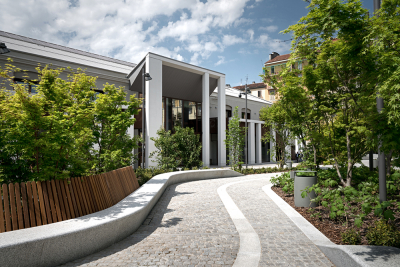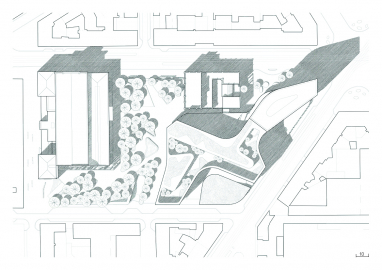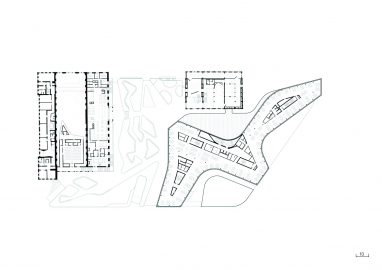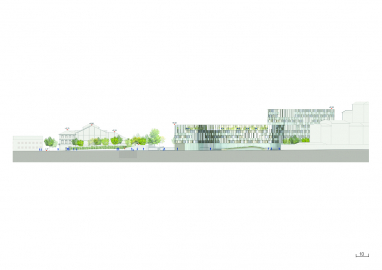Lavazza Campus: company headquarters and museum, public garden and multi-functional center
On a rainy day, you must open your umbrella to go to lunch: this is one of the main goals of the new Lavazza Headquarters campus. If global companies often build autonomous, fully serviced “magic castles”, the reform of a former industrial precinct into a lively new multifunctional complex is founded on the notions of urbanity, openness and social exchange.
A fruitful collaboration between Lavazza and the public administration gave birth to one of the most relevant urban regenerations of Turin’ first periphery. The new functions – advanced work spaces for 600 people, recreation facilities, a company museum and shop, an underground parking, an event centre, a cafeteria serving both employees and public, a gourmet restaurant and a design school – dialogue with each other across a public garden, the new green heart of a complex whose environmental quality deserved a LEED Platinum certificate. The vibrating metal and glass façades of the new offices, the large public atrium with the waving stairs, and the white triliths bordering the refurbished warehouses constitute the new loved backdrop of the neighbourhood’s daily life, creating unseen relationships between the global dimension of the company and its deep roots in the city.
The design proposed for the new Lavazza headquarters and the renovation of the former Enel power station near Largo Brescia shows a profound appreciation of the history of the city and the neighbourhood, as well as for the history and culture of the coffee company. The large existing block between Via Bologna, Largo Brescia, Corso Palermo and Via Ancona has been redesigned and opened to the city, while the documented industrial architecture have been preserved. The heart of the project is a new, expansive tree-planted piazza in the centre of the block positioned on the axis of Via Parma, which makes the large building of the former Enel power station enter into a dialogue with the new headquarters of Lavazza.
The materials and colours of the Lavazza Campus all belong to an attempt to create an urban complex, blending in with the existing fabric without any mimetic intentions. The three existing buildings from the turn of the century are replastered in two tones of warm grey. The new artificial stone elements which complete their facades triliths are in a “dirt grey” hue obtained by white stone powder mixed in the concrete. The window frames are enamelled in a metallic rust colour.
The paving of the open spaces is made by cobblestone in local Sienite stone, contained in bands of white Diorite which marks also the fountain and the benches.
The depth of the skin of the main office complex not only reduces solar radiation, but also reacts to the weather at all hours and seasons, turning the building in a big sundial. The aluminium elements are finished in a dark brown rough enamel. The spandrel panels are made of backpainted glass in two shades of light brown and in cobalt blue. Some glasses are silkscreened with small white dots maintaining their transparency. The main door handle is cast in solid brass.

